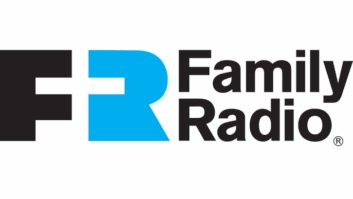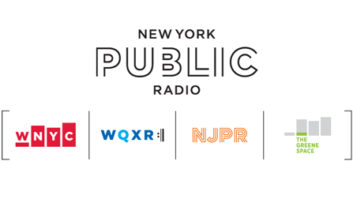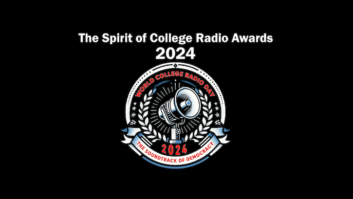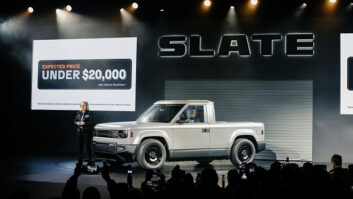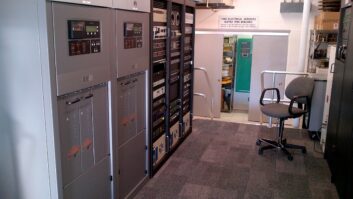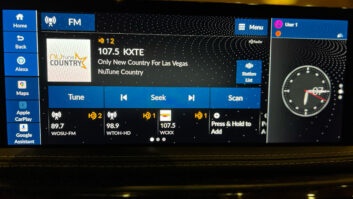This is one in a series about HD Radio best practices. Greg Savoldi is the Columbus region lead engineer for iHeartMedia, based at WTVN in Columbus, Ohio. He also is chairman of the Ohio Emergency Communications Committee and the SBE frequency coordinator for Central Ohio.
Radio World: For someone about to install an HD Radio air chain in 2025, what advice can you offer, based on your own experiences, to help them get the best performance and smoothest installation experience?
Greg Savoldi: The short answer is “Get the combo meal!”
Here’s what I mean: In the early days, we had a discrete box for this, another for that, a third for the other thing — importer, exporter, FM audio processor, HD audio processor, etc. On the RF side you had several options, including split-level combining and high-level combining — we wasted a lot of power, heat and money — both of which required two transmitters. If you only needed up to 9 kW TPO, you could run low-level combining into one FM+HD transmitter.
Sometimes we used the aux FM antenna — lower on the tower than the main antenna — as the “HD” antenna, fed by a low-power HD-only transmitter. It worked, but not without compromise. I ran one Class B site like this for 12 years before upgrading to a GatesAir FAX20, FM+HD all in the main antenna, and a quadruple power increase in HD injection to –14 dBc. The result was and is outstanding.
If you start fresh today, there’s a one-box combo solution for establishing the “HD channels,” meaning importer/exporter in one chassis. The transmission side is simply one transmitter, low-level combined, from 40 watts to 40 kW TPO and one antenna — your existing main.
The redundancies afforded by today’s FM+HD transmitters, their reliability and hot-swap modular designs allow you to give serious consideration to minimizing footprint in high-cost leasing space situations. A 40 kW TPO transmitter is two racks! One audio processor easily handles all aspects of the FM-analog and HD-digital processing needs. It’s minimal footprint for multi-channel FM+HD at high power. Three racks’ worth of space, about 20 square feet, gets it done. Incredible!
It’s wise to put everything on a UPS. Double-conversion type is best.
RW: For stations already in HD Radio, how can they assure that they’re getting the best performance out of their systems?
Savoldi: There were several items to manage in those first five years of HD. I recall struggling to maintain tight time alignment between the FM and HD signals, because you (still) have to delay the analog path on the order of up to 10 seconds while the HD side gets its bits in a row! It came down to the steady hand of GPS sync and the importer and exporter boxes coming to an agreement on which would call the shots on clocking and stability.
Fortunately, we’re past that now with the integration of importer/exporter design.
Clocking is still important and you still want that sync with the exciter. Nothing will drive a listener or a PD crazier than time shifting between FM and HD1! There’s simply no reason to have that problem anymore.
The newer importer/exporter units actually monitor and adjust time alignment in real time, down to a couple frames, plus set phase polarity. It’s quite impressive — a word of thanks to Alan Jurison for his development work on this feature and many others in HD advancement.
For higher RF power TPO, there was no option early on except to run a tube transmitter that had been modified for a more linear/wider bandpass to successfully pass the HD carriers around the FM component. We had Serial No. 001 of Continental’s 816L, a water-cooled FM+HD version of the classic 816, that produced up to 30 kW TPO with –20 dBc HD; it was on WNCI from 2006 through 2018. Ask my Senior VP of Engineering Dan Mettler about signing that deal on the floor of the NAB Show in 2006. We had a deadline!
Serial No. 001 of Harris’ HT/HD+ is still on-air as the main FM+HD transmitter on WCOL-FM in Columbus, since June of 2006.
Regarding tube transmitters — and we have many of them still on the air in iHeart — pre-corrective RTAC, or Real-Time Adaptive Correction, is the only way to go in maintaining mask compliance. Solid-state FM+HD transmitters are inherently broadband, requiring minimal effort to get into/maintain compliance. However, as you raise HD injection levels to and above –14 dBc, some level of real-time adaptive is good engineering practice for any transmitter.
You’ll do yourself a disservice without sharp shoulders at and around the edges of FM and HD carriers. For example, HD3 service will greatly suffer dropouts without mask integrity — nor can you over-deviate the FM component! Best HD playout to the edges of your service contour is only realized with optimal mask sharpness and depth. Also, not being in compliance sprays noise on first- and second-adjacent channels. It’s important to be a good neighbor.
For the listener’s aural experience, there was this concept early on that the HD1 signal could be “pristine,” with next-to-nothing processing, to minimize coding artifacts and give the listener that “high-def,” CD-like sound. Well … if we could’ve guaranteed that all FM HD Radios would never blend back from HD1 to the FM analog “parent,” maybe this could have worked. But in the real world, receivers blend and slide back and forth for a variety of reasons, usually at the edge of station contour or man-made attenuation factors.
When turning the radio on or tuning to a different station, most start with the FM side, then once they lock on the HD component, glide into HD1. If your “main channel” is highly processed, composite clipped, etc., but you run the HD1’s processing as the “CD” channel, your listener will get jolted back and forth as their radio slides between FM and HD1.
Equally annoying is how most FM car radios go into stereo blend at the slightest onset of FM multipath or reduced signal for optimum stereo separation — receiver manufacturers try shielding the listener from FM noise and hiss. HD doesn’t suffer from blending nor multipath, it’s either there or not. So imagine the difference between this highly processed/RMS, just-about-mono FM audio, which then glides to a soft, CD-like dynamic, wide spatial image, and then back.
My approach is to gain-match (amplitude/RMS) and response-match (spectral balance) the FM and HD1. The HD1 will tend to have more spectral “air” or brilliance than the FM analog side. It’s your choice to work that response curve on the HD side of your processor, along with other HD bit-reduced compression artifacts, in consideration to your HD1’s “signature sound” comparatively to its FM analog parent.
Most FM antennae are sufficiently broadband to pass FM+HD with no serious degradation. High-VSWR situations should be addressed for either mode. Where you can get into some issues is tight-spaced situations on a combined antenna with two stations under 1 MHz apart. RTAC is really important here, getting your combiner module’s group delay response and phase coherency the flattest it can be.
On HD2/HD3+ channels, keep in mind that as you add channels, you must reallocate the pool of bits available across all your HD channels. A standard HD1+HD2 setup would be 48 kbps + 48 kbps. But if you add HD3, now what? Generally, it’s a reshuffling of the bit-sharing, not always equally. Usually the HD3 (and beyond) channels get rather “bit-challenged.” Program and process wisely!
RW: How does HD Radio equipment compare today with what was on the market 10 or 15 years ago? What should an engineer know if they haven’t worked on a system in a while?
Savoldi: We are now on third- or fourth-generation designs — 20 years into the game — with smart engineers and manufacturers spearheading excellent advancements in these key building blocks for HD transmission.
If you’ve been away from HD Radio engineering for 10 or 15 years, you’ll really like where we’re at now, with diagnostics, IP-based control and analytics, stability, integrated designs, serious advancements in high-power FM+HD RF.
On the receiver/monitoring side of things, there are many good and cost-effective developments for our ability to monitor HD stations. On the consumer side, Sangean makes several nice FM+HD radios that give a solid, portable, battery-powered solution to checking playout performance, around $125. You can spend thousands on commercial, industry-grade devices with serious analytics that’ll alarm with a tolerance issue — if not outright fix the problem itself — and then text and email you.
RW: Are there other best practices can you recommend for the monitoring of HD Radio signals?
Savoldi: Current-generation systems are inherently stable, day to day, in HD playout. Simply listen to your HD Radio “open up” into HD mode from FM. Are the volume/RMS audio levels about the same as it glides over? Is time alignment dead-on?
At the transmitter site, keep an eye on your RF spectrum; is the mask compliant? Are you seeing an increase in “failed” versus “success” RTAC attempts?
On tube transmitters, emission falls off with aging — “going soft.” The instantaneous peaks required by the HD carriers get soft-clipped by a tube that’s losing peak emission capability. The mask will start to diminish, as goes performance and compliance. You may notice an increase in dropouts on HD3+ channels or more blending back to FM from HD, especially toward the edges of your service contour.
RW: How can HD Radio stations assure that their transmitters would have enough headroom to take advantage of higher digital power above –14 dBc, if the FCC allows it?
Savoldi: You should always confer with your transmitter manufacturer on the headroom capabilities of your respective transmitter before attempting to increase injection. It’s quite a leap from –14 dBc to –10 dBc. It is NOT a linear function, by any stretch! Serious power supply demands in high-injection scenarios must be considered.
RW: Thanks for all the great feedback. Finally, how has the evolution of transmitters changed the way engineers plan HD Radio installations?
Savoldi: You might think retiring an analog FM tube transmitter and the HD-only smaller transmitter combo to a current-generation air-cooled FM+HD solid-state model would require the same or less cooling requirements. Unless you are going with the FLX liquid loop cooling series from GatesAir (versus their conventional FAX high-power air-cooled), you’ll need more A/C than before.
Solid-state is wonderful and there’s every good reason to move to it, but be ready to manage a marked increase in heat load. Talk with your proposed transmitter manufacturer to obtain specifics; most of their websites have this information readily available. Expect on order of a 50% increase in heat load to manage. But the performance and operational gains are worth it.
This article is from the free ebook “HD Radio Best Practices 2025.”
